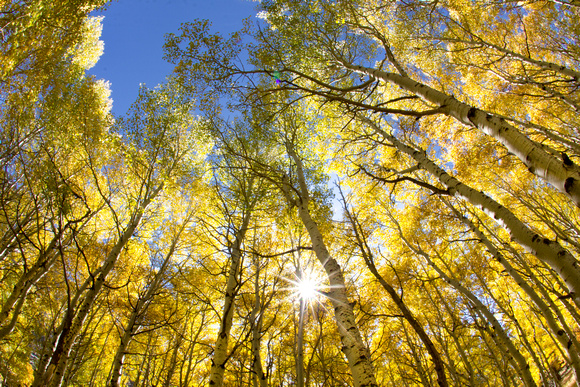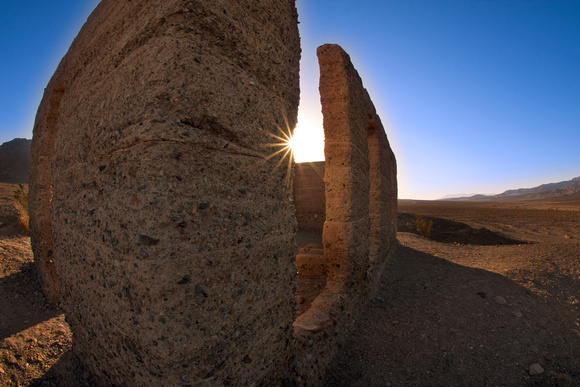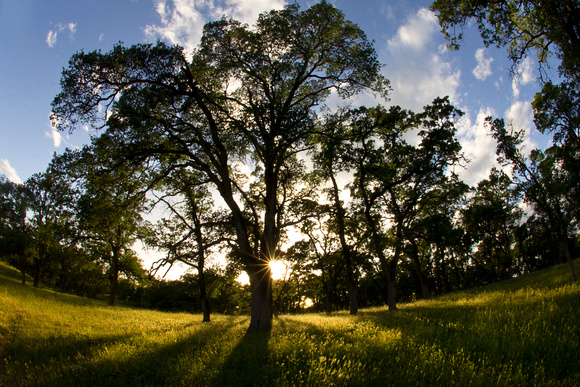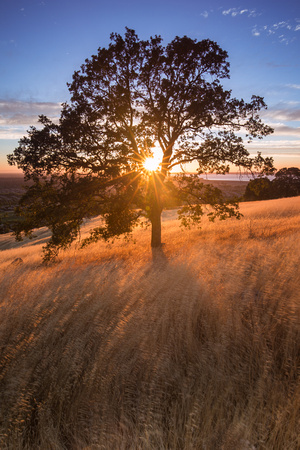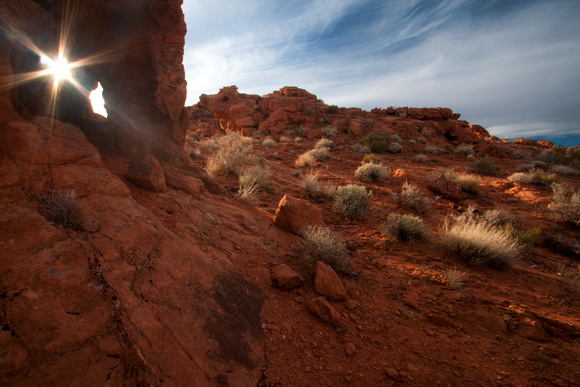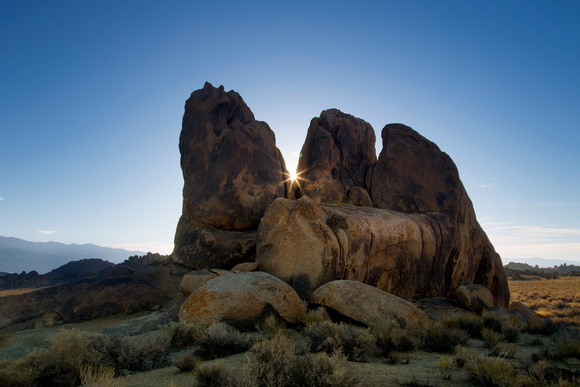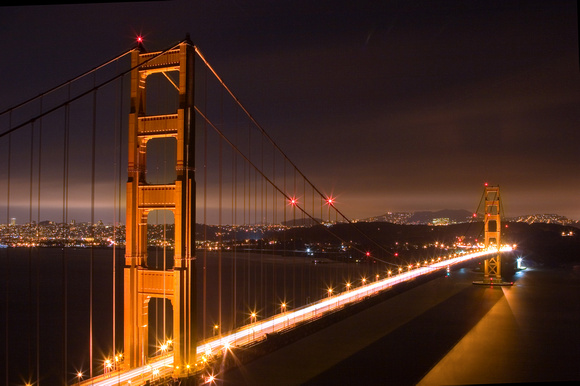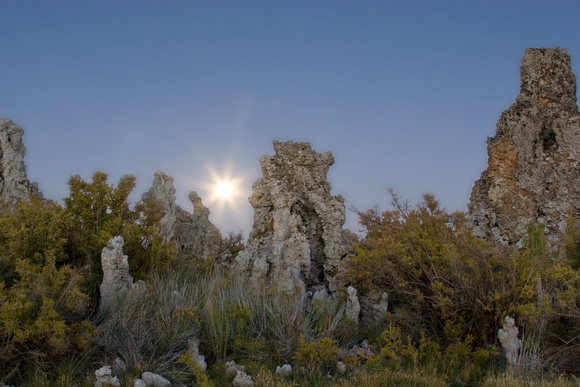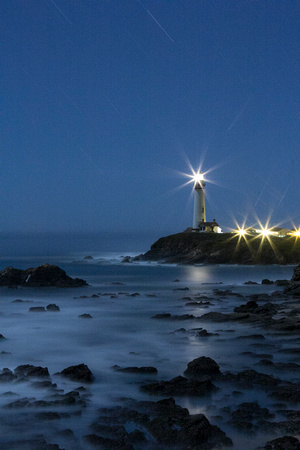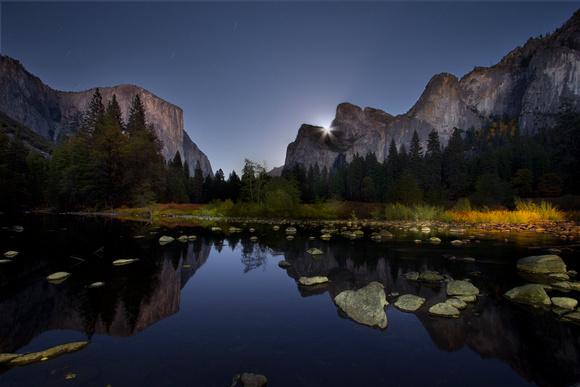Using the sun burst effect to create dramatic photos
Star effects in photography go by various names including: Sun stars, Star bursts, and Sun bursts. I tend to lean towards calling them sun bursts, so I'll stick to that description here. Whether to include these in photos is a matter of personal preference. Some people like them and some people don't. I like to include them, as you will see in my images below.
It is an interesting effect that can help focus attention on a specific area of the photo. If you want to direct the viewer’s eye, a sun burst just might be the thing to accomplish this!
|
Ancient Bristlecone Pine Forest - 16 mm, f22 @ 1/30 second, ISO 100 |
To understand how sun bursts occur, we'll have to get a little technical - just a little.
Diffraction occurs when a beam of light is spread out as it is passing through a narrow aperture. If you shoot a light source, such as the sun or full moon with no interference, it will often appear as a single beam of light. But, when you place it on the edge of an object, such as a tree or rock, you will start to see it split into multiple beams or points. You will notice in most of the photos here, I've used an object to increase the diffraction.
|
Aspens, June Lake Loop - 10 mm, f22 @ 1/13 second, ISO 100 |
Ashford Mill Ruins, Death Valley - 10 mm, f16 @ 1/60 second, ISO 100 |
The aperture at which you have your camera set will influence the sun burst as well. If you are shooting at f/2.8 (wide open), you won’t see the sun burst, but close it down to f22 and you will see a pronounced sun burst effect. This is because the opening is smaller and the light has to bend around the aperture blades, which helps to create that star effect.
|
Deer creek Oaks, Rancho Murrieta - 10 mm, f22 @ 1/13 second, ISO 100 |
The shutter speed will affect the results as well. The longer the exposure, the more pronounced the sun burst will be. This is a good time to pull out the tripod. This will allow you to take longer exposures, plus it will keep the camera still so you don't lose the sun burst through movement.
|
Oak Tree, El Dorado Hills California - 21 mm, f19 @ 2 seconds, ISO 50 |
The number of blades on your lens aperture will influence how many points your sunburst will have. If you have an even number of blades, you will see that many points, but if you have an odd number of blades, you will get twice as many points. You can experiment with different lenses to see which affect you like the most. In the photos here, I've used several different lenses, apertures, and shutter speeds.
|
Rainbow Bridge, Folsom California - 10 mm, f22 @ 1/13 second, ISO 100 |
Valley of Fire State Park - 16 mm, f22 @ 1/8 second, ISO 100 |
Shooting sun bursts can be challenging in terms of your overall exposure because the light source itself can get blown out pretty quickly if you are trying to get detail in the scene. You can choose to either under-expose the scene for a backlit image, over expose and blow out the sun burst (and surrounding area), or take multiple images and use High Dynamic Range (HDR) to balance the exposure. In the images I have here, I have either adjusted the shadows and highlights in Lightroom or I have merged multiple exposures using HDR. It all depends on what you are going for and how much time you want to spend in post process.
|
Alabama Hills - 35 mm, f22 @ 1/10 second, ISO 50 |
Mono Lake - 28 mm, f22 @ 1/13 second, ISO 100 |
The sun burst effect can be achieved with other sources of light besides the sun. Try using the moon or artificial sources of light to create points of light. In the shots below, the lengthy shutter times helped to increase the sun burst effect.
|
Golden Gate Bridge - 24 mm, f16 @ 147 seconds, ISO 100
|
Mono Lake - 28 mm, f16 @ 6 seconds, ISO 800 |
|
Pigeon Point Lighthouse - 65 mm, f22 @ 431 seconds, ISO 640 |
Valley View, Yosemite - 16 mm, f11 @ 323 seconds, ISO 100 |
You can also create the star burst effect by using a star effect filter, which has a criss-cross pattern to diffract light, or use Photoshop to artificially add a sun burst effect to your images. As you can see here, you can create sun bursts just by applying a few simple techniques.
Happy shooting!


